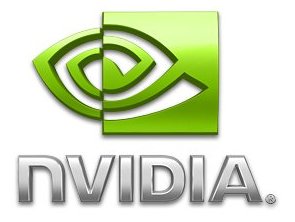Tough times ahead for Nvidia? Part one
Why Nvidia could be battling for its very survival

Is graphics specialist Nvidia in mortal danger? That's a question we've been increasingly pondering in recent months.
The case for the prosecution goes something like this. Pretty much every part of Nvidia's business is either under immense pressure or at risk of evaporating altogether. Take the company's PC chipsets. With Core i7 Intel has started to shift towards producing processors with more and more features integrated into the CPU itself.
Later this year, Intel will wheel out its first processor with on-package graphics. At which point, any third party chipset with integrated graphics - such as Nvidia's GeForce 9400 - will seem rather redundant. Poof goes a large slice of Nvidia's chipset business in both desktops and laptops.
Of course, AMD has similar plans to bring integrated graphics cores into its CPU dies, so even that small slice of the market looks like toast. It's also notable that Nvidia chose not to produce a chipset supporting the Core i7 in favour of waiting for the mainstream Core i5 to appear. The process of market shrink has already started.
Much the same problem applies to Nvidia's new Ion ultra-mobile platform for the Intel Atom processor. Undoubtedly, it's an extremely attractive looking platform compared to Intel's rather pathetic Atom chipsets.
Problem is, the next iteration of Atom, known as Moorestown, is due out later this year. Moorestown is pretty much a system-on-a-chip design, doing away with the need for a supporting chipsets. It very much looks like the rug will be pulled from beneath Ion just as it begins to establish itself on the market.
The PC graphics business
Get daily insight, inspiration and deals in your inbox
Sign up for breaking news, reviews, opinion, top tech deals, and more.
Meanwhile, Nvidia's meat-and-potatoes PC graphics business has been having a pretty torrid time of late. Part of the problem is the surprising return to form of AMD with the ATI Radeon HD 4000 series of graphics chips. These are some of the most effective and efficient GPUs of recent memory. They're also extremely compact and therefore cheap to produce. The upshot of which is that margins and profitability on Nvidia's bigger, more costly chips are being squished.
Nvidia has also been suffering production quality problems involving the packaging materials used with many of its graphics chips. It's hard to know exactly how bad the problem is, but the company has reportedly recently admitted to spending over $40 million trying to patch things up.
At the same time, some analysts suggest that the broader market trend is towards a polarisation of the PC graphics market in favour of integrated at one end and performance graphics at the other, with relatively little volume in the middle. With Intel's new CPU strategy increasingly cutting it out of integrated graphics, that leaves Nvidia fighting for scraps at the performance end of the market.
Technology and cars. Increasingly the twain shall meet. Which is handy, because Jeremy (Twitter) is addicted to both. Long-time tech journalist, former editor of iCar magazine and incumbent car guru for T3 magazine, Jeremy reckons in-car technology is about to go thermonuclear. No, not exploding cars. That would be silly. And dangerous. But rather an explosive period of unprecedented innovation. Enjoy the ride.